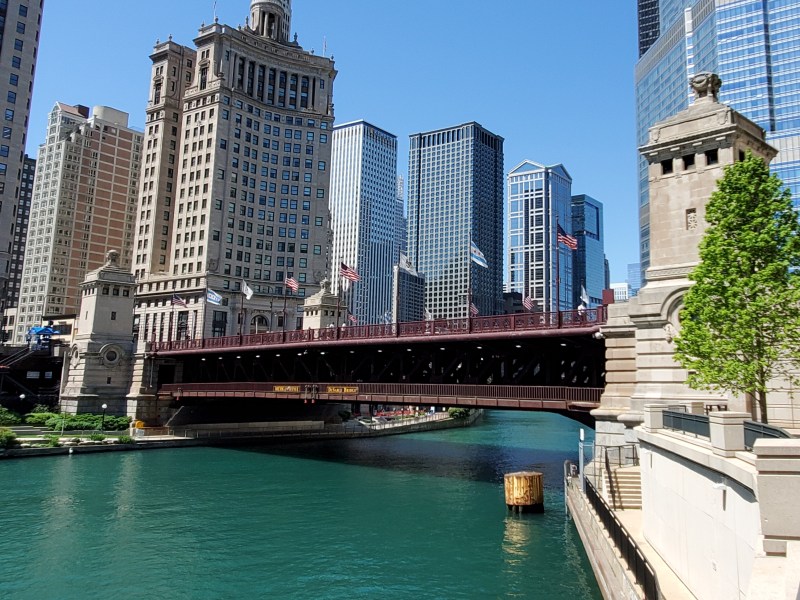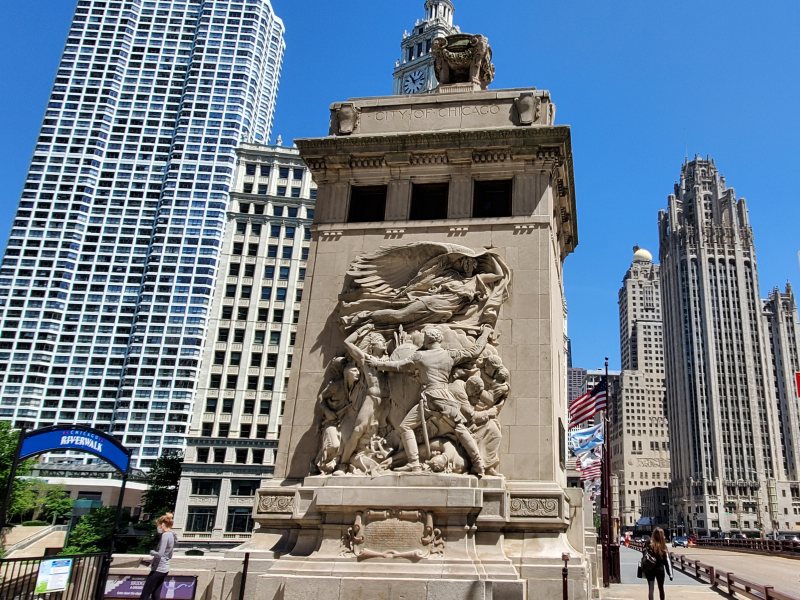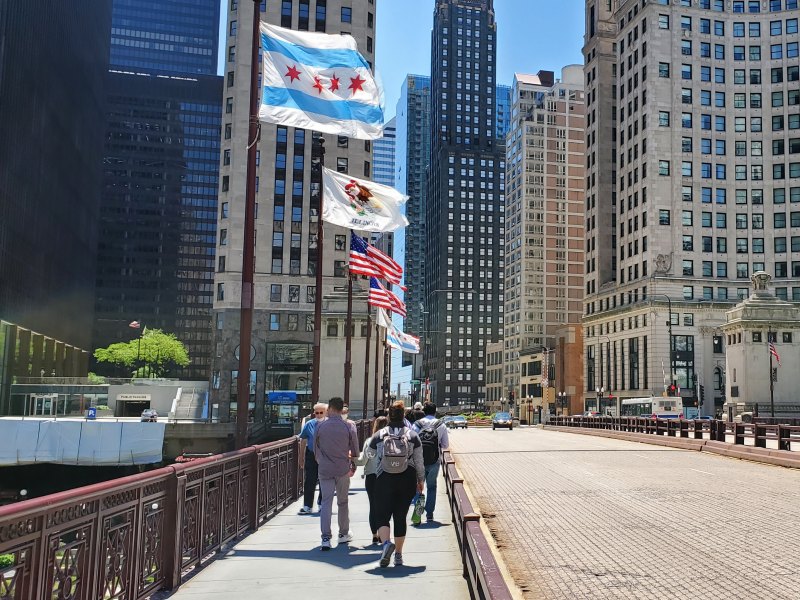 DuSable (Michigan Avenue) Bridge
DuSable (Michigan Avenue) Bridge
Michigan Avenue at the Chicago River
Begin this tour on the southwest side of the DuSable (Michigan Avenue) Bridge at the Chicago River.
The DuSable Bridge is named in honor of Jean Baptiste Point du Sable, regarded as the first permanent non-Native American settler in what is now Chicago. Of African descent (believed to be born in Haiti), Point du Sable settled at the mouth of the Chicago River in approximately 1780. He became a very successful frontier trader, growing the area into a prosperous trading settlement. His accomplishments played a significant role in the early development of Chicago. The successful businessman sold his Chicago River property in 1800 and moved to St. Charles (near St. Louis, Missouri) to run a river ferry.
Before discussing the DuSable Bridge further, take a few moments to look west down the river and into the city. You will see a series of bridges which link the Loop to the north side. These moveable bridges, which open to let boat traffic up and down the river, are engineering marvels. Chicago has a total of 38 moveable bridges, with the first moveable bridge constructed in 1834 at Dearborn Street.

The DuSable Bridge has some interesting relief sculptures on its north and south pylons. The south pylon sculpture entitled Defense highlights the Fort Dearborn massacre of 1812, while Regeneration depicts the rebuilding of Chicago after the great Chicago fire of 1871.
The north pylon relief sculptures Discoverers and The Pioneers honor Jacques Marquette and Louis Joliet, the first European explorers to discover the area in 1673. They came across this area as they sought a short-cut to the Mississippi River from the northern Great Lakes.
If you walk just south of the bridge (and cross East Wacker Drive), you can see brass markers in the sidewalk which mark the site of Fort Dearborn. Fort Dearborn was built by the U.S. government in 1803 to protect the strategic site of Chicago.
If you haven't already done so, begin walking north across the bridge. Our next stop is located on the other side.

SIDE TRIP!
If you're into architecture, be sure to stop in the Chicago Architecture Center (CAC) at 111 E. Wacker Drive. It is located near the southeast corner of Michigan and Wacker, and is the leading organization devoted to celebrating and promoting Chicago as a center of architectural innovation.